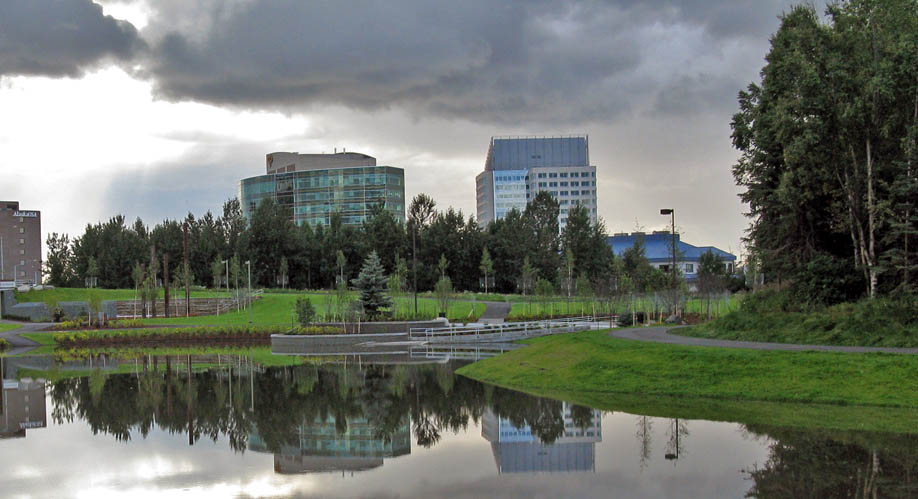
We Need Trees
Community forests include natural areas, greenbelts, and parkland; and trees planted along streets and around buildings and homes. Managing this entire landscape as a system is called community forestry.
Trees are Environmental Solutions
Trees are a critical national and local priority because they:
- Clean the air and help meet air quality standards by absorbing large amounts of harmful pollutants, including carbon dioxide;
- Improve national energy security by reducing use of non-renewable fuels for heating and cooling;
- Help meet water quality standards by reducing soil erosion and polluted stormwater runoff;
- Create wind and snow breaks and filter blowing dust;
- Provide shelter and food for birds, fish, and other wildlife.
Trees are Economic Solutions
Community leaders are planting more trees because:
- Trees reduce flooding and runoff for less money than engineered solutions;;
- Consumers spend more in retail and business locations with trees;
- Trees reduce residential and commercial heating and cooling costs;
- Property owners receive higher revenue for commercial office space with high quality landscapes;
- Worker satisfaction and productivity is higher with views of green;
- Trees beautify cities and help reduce noise.
Trees are Social Solutions
Research has shown that trees in communities:
- Create stronger ties among neighbors and a greater sense of safety for urban residents;
- Reduce crime, noise, litter, and graffiti;
- Provide areas for recreation, relaxation, and exercise, which relieve stress and improve our health;
- Increase self-discipline and reduce attention deficit disorders in children;
- Bring nature close to where people live and work.
Trees Need Us
Trees in rural forests may live up to 200 years but the average life span of a downtown tree is only 10 years. Without care, trees may decline and become liabilities but when given the attention and care they deserve, trees are one of the few public assets that increase in value and provide more service as they age.
A successful community forestry program provides benefits and savings that far outweigh its cost. An effective program:
- Ensures that public dollars are spent wisely on high quality trees that are suited for the site where they are planted;
- Trains and supervises city crews and contractors to use the best planting and care practices, which extends the lives and maximizes the benefits of public trees;
- Ensures a diversity of trees species
- Oversees regular maintenance and monitors for insect and disease problems and invasive species;
- Identifies and removes hazardous trees;
- Mitigates wildfire danger;
- Works with engineers and developers to protect trees during construction activities;
- Offers tree selection, planting, and care information to residents, property managers, and green industry professionals.
- Trains volunteers and engages nonprofits and businesses in planting and caring for trees;
- Represents the best interests of trees through the planning and development process.
See Alaska Cities to learn what is going on where you live. If there is no organized effort to care for public trees in your community, you can start the process. Call the Alaska Community Forestry Office for help.
